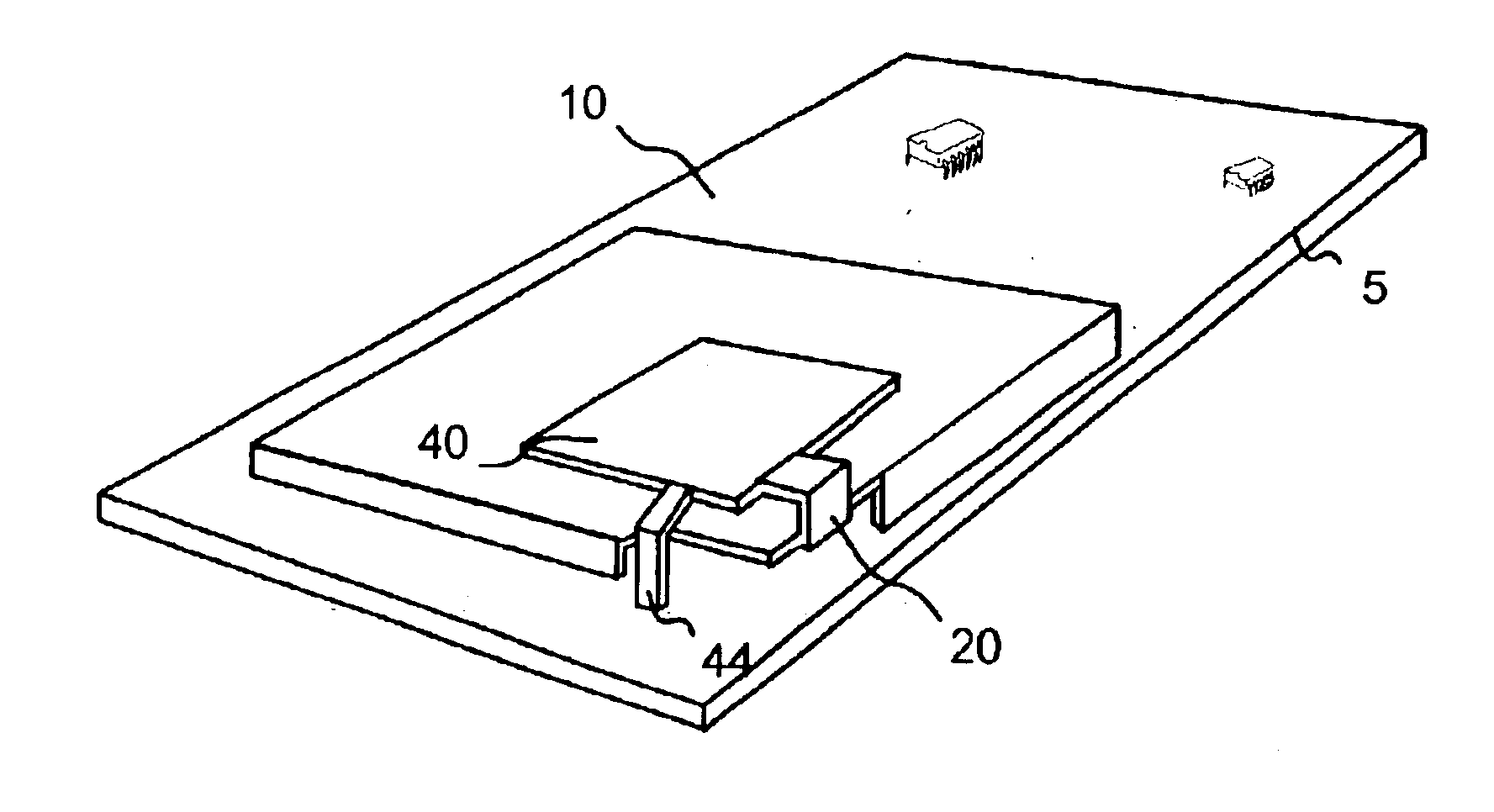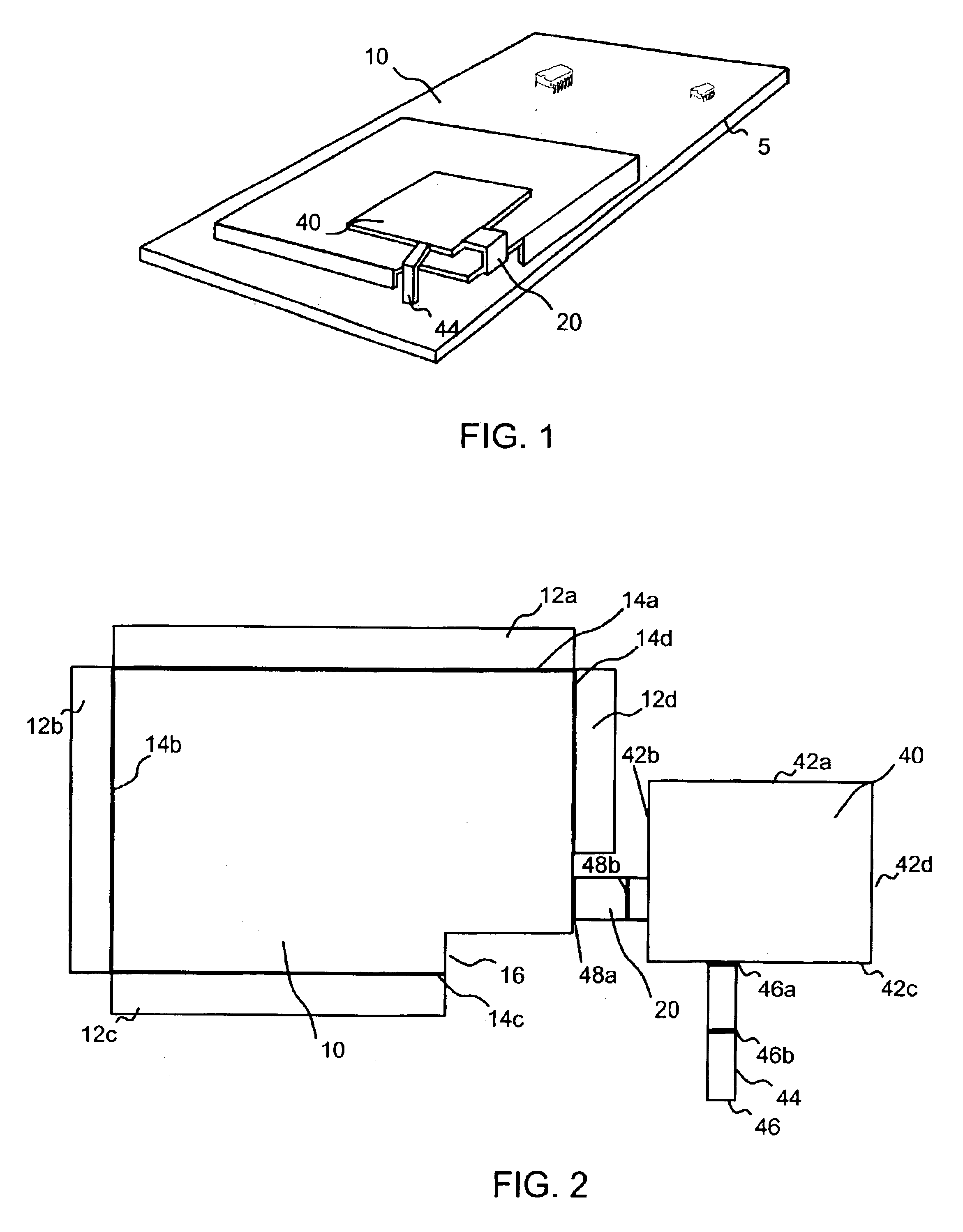Integrated inverted F antenna and shield can
a shield can and inverted f technology, applied in the field of radio frequency (rf) devices, can solve the problems of unsatisfactory increase of space requirements for the overall device and package, and achieve the effects of convenient installation, excellent electrical performance and compact siz
- Summary
- Abstract
- Description
- Claims
- Application Information
AI Technical Summary
Benefits of technology
Problems solved by technology
Method used
Image
Examples
Embodiment Construction
A significant aspect of the present invention is the ability to integrate the functions of both an antenna and shield can. More particularly, the present invention provides a unique configuration by which the functionality of a planar portion of a shield can and an inverted F-antenna ground plane are shared, resulting in a more compact design and excellent electrical performance.
FIG. 1 is a perspective view of the integrated inverted F antenna and shield can mounted to a circuit board 5 according to a preferred embodiment of the present invention. FIG. 2 is a plan view of a single sheet of conductive material 7 prior to folding. FIG. 1 thus depicts sheet 7 of FIG. 2 in a folded configuration whereby both a shield can portion 10 and planar radiating element portion 40 can be easily seen. FIGS. 3-5 show plan, and different side views of the folded device shown in FIG. 1.
Referring again to FIG. 2, sheet 7, which is in a pre-folded state, preferably includes two major portions: a shield...
PUM
 Login to View More
Login to View More Abstract
Description
Claims
Application Information
 Login to View More
Login to View More - R&D
- Intellectual Property
- Life Sciences
- Materials
- Tech Scout
- Unparalleled Data Quality
- Higher Quality Content
- 60% Fewer Hallucinations
Browse by: Latest US Patents, China's latest patents, Technical Efficacy Thesaurus, Application Domain, Technology Topic, Popular Technical Reports.
© 2025 PatSnap. All rights reserved.Legal|Privacy policy|Modern Slavery Act Transparency Statement|Sitemap|About US| Contact US: help@patsnap.com



